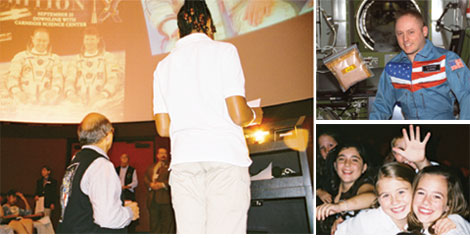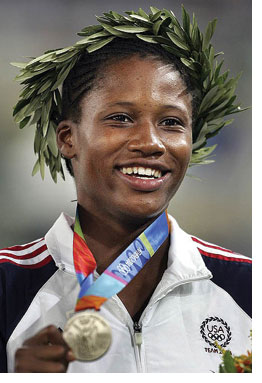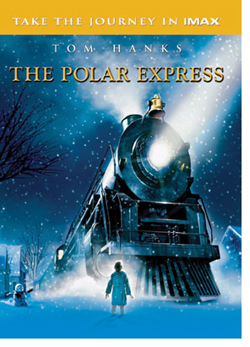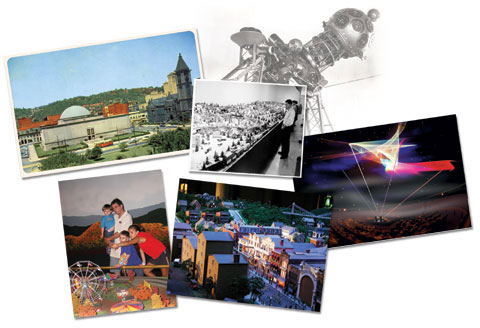Carnegie
Science Center: Changing Lives

More
than 900 local students participated in a a question-and-answer
session at Carnegie Science Center with
Astronaut
Mike Fincke who is currently aboard the International
Space Station.
Downlink from International Space Station Inspires
Students
Emsworth native and NASA Astronaut Mike Fincke performed
more than a couple of amazing feats when he spoke from
the International Space Station to 900 Pittsburgh students
watching him from Carnegie Science Center on September
22, 2004.
In a short 20-minute downlink from the International
Space Station, Fincke managed to:
- Keep 900 students
totally silent and fascinated.
- Turn somersaults in
space and jump to catch in his mouth M&M’s® that
had floated out of a bag.
- Get just about every child
and adult in the theaters dreaming about being
an astronaut.
Fincke, 37, and fellow Russian cosmonaut
Gennady Padalka, talked with—and took questions
from—students
from 17 local schools, including Fincke’s
alma mater of Sewickley Academy. The students
watched and
listened to the astronauts on large screens
in the Science Center’s three theaters.
Fincke told his audience that it was his trips
as a child to the Buhl Planetarium that made
him want
to
be an astronaut. “The Buhl inspired me,
but there are so many things to inspire your
dreams,” Fincke
said. “Study hard and you’ll be
able to reach your dreams. Never give up on
your dreams.”
John Radzilowicz, Carnegie
Science Center’s director
of visitor experience, says the entire downlink
experience was exciting. “This is the
kind of thing where you can see the long-term
impact of the Buhl Planetarium
and Carnegie Science Center. Mike made a career
choice in life based on what he had seen at
the Buhl as a
child, and we suspect one of the children in
the audience on September 22nd will do the
same,” he says.
Fincke and Padalka are
the ninth crew to serve on the International
Space Station. Officers
rotate every
six months. Fincke earned two bachelor’s
degrees related to aeronautics and astronautics
from the Massachusetts
Institute of Technology as well as two master’s
degrees, one from Stanford University and the
other from the University of Houston.
In response
to the students’ questions, Fincke
and Padalka explained that their days are busy,
filled with working on scientific experiments
and maintaining
the space station. Each day also includes about
two-and-a-half hours of exercise to reduce
the accelerated bone-mass
loss that occurs in space.
When asked if things
are harder or easier to do in space, Fincke
said “easier,” and
then proceeded to flip around in a somersault with a gentle nudge from
Padalka. “The
tough thing is to eat these in space,” Fincke said, holding open
a bag of M&M’s®, which slowly floated up into the air.
While weightlessness is like flying, Fincke said it takes time to get “your
space legs” and
just as long to walk again normally once you land on Earth.
The Buhl Foundation
and NASA’s Pennsylvania Space Grant Consortium provided
generous support to upgrade satellite equipment and make this once-in-a-lifetime
opportunity available to area schools free of charge. NASA provided
the downlink at no charge.
Howard Bruschi, chairman of the Carnegie
Science Center board, summed
up the excitement of the event when he told the children before the
presentation began: “Who
knows, maybe 10 to 20 years from now one of you in the audience may
be calling us from Mars or the Moon!”
 Olympic Sprinter Honed Her Winning Spirit at Carnegie
Science Center Olympic Sprinter Honed Her Winning Spirit at Carnegie
Science Center
In interviews with journalists across
the country, Lauryn Williams, a native of Rochester,
Beaver County,
credited an exhibit at Carnegie Science Center with
instilling in her a love of running. It was a trip
there in 1992 when Williams discovered the interactive
display of former Olympic sprinter Florence Griffith-Joyner.
The image of Griffith-Joyner appears on a long video
board, and a track next to the screen allows runners
to run alongside her image and compare their speeds
for fun. (A similar exhibit now resides permanently
in UPMC SportsWorks.)
According to interviews with
Williams in the Pittsburgh Post-Gazette, Runner’s
World magazine, and the Washington Post, when Williams
was a very young girl
she tried the exhibit early in the morning—and
then kept at it for hours until she actually beat
Flo-Jo’s
time on the screen.
When Williams won the silver
medal in the 100-meters final in the Summer 2004
Olympic Games, she credited
the Science Center for the role it played in
her running career. Williams, a 2001 Rochester Area
High School
graduate, has been called the most successful
high
school sprinter in Pennsylvania history.
 Polar Express Polar Express
Pulls Into Carnegie Science Center
Visitors are enjoying Polar Express, one of the new
movie features showing at Carnegie Science Center's
Rangos Omnimax® Theater. The movie tells the story
of a young boy who wakes up to find outside his door
a Polar Express train on its way to the North Pole.
The Time-Warner movie, which stars Tom Hanks, is based
on the children's book of the same name by Chris Van
Allsburg.
Upcoming Polar Express Programs
Everyone loves the holidays, and now there is reason
to love them even more...families can play at Carnegie
Science Center all day and stay all night for Polar
Express Overnighters on November 20, December 4,
and December 17. And, on December 5, catch the Breakfast
Express celebration. Beginning at 9 a.m., enjoy breakfast,
storytime, a showing of The Polar Express OMNIMAX® film
and a VIP tour of the Miniature Railroad and
Village® holiday
display.
Brought to you by The Grable Foundation.
Two Traditions that
Continue to be New:

Henry
Buhl, Jr. Planetarium and
The Miniature Railroad & Village®
Many people from the Pittsburgh region remember their
annual trek during the holiday season to enjoy the Miniature
Railroad & Village display at “the
old” Buhl Planetarium and Institute of Popular
Science on the North Side. This visit was often combined
with a stop inside the planetarium to gaze up at one
of its spectacular sky shows.
Today, the Miniature Railroad & Village exhibit
and star-gazing continue at Carnegie Science Center
in greatly expanded forms, and both are “a result
of the wonderful legacy of the Buhl Foundation and
the Buhl Planetarium and Institute of Popular Science,” says
Patty Rogers, the Science Center's coordinator of historic
exhibits.
Henry Buhl, Jr. Planetarium Has Been Inspiring Minds
for 65 Years
Henry Buhl Jr. created the Buhl Foundation as a memorial
to his wife in 1927. Twelve years later in 1939, the
foundation opened the Buhl Planetarium on the North
Side —as a gift to the City of Pittsburgh. The
Foundation continued to support the Buhl through the
decades, and in 1982 the facility was renamed The Buhl
Science Center and began to operate independently.
In 1987, the Buhl merged with Carnegie Museums of Pittsburgh
though it remained in its original North Side facility
until Carnegie Science Center opened in 1991. This
year, the Planetarium marks its 65th year in continuous
operation.
Doreen Boyce, Buhl Foundation president,
says today's Henry Buhl, Jr. Planetarium and Observatory
has evolved with new technology. "Carnegie Science
Center continues to attract young people with exciting,
innovative exhibits. At the
Planetarium, the very latest probes into the universe shape the programs that
we create with state-of-the-art technology.
“
These programs were once specific to Buhl Planetarium but are now translated
into 14 languages and exported to 18 nations across the globe,” Boyce
says. Our own two Pittsburgh astronauts began at the Buhl Planetarium!
So the original mission—to influence generations of children and
to awaken them to the wonders of the scientific world—continues.”
Sixty-five
years later, the Buhl Foundation is still an integral part of Carnegie
Science Center and its operations. In 2002, the Foundation gave
$3 million—the
largest single gift in its history—to endow the Science Center’s
director position, which is known as the Henry Buhl, Jr., Director chair.
It has also funded a number of Science Center projects, including two popular
Buhl Planetarium shows, The New Cosmos and The Sky Above Mr. Roger’s
Neighborhood.
The Miniature Railroad & Village Celebrates 50 Years of Replicating History
The Miniature Railroad & Village is
an ever-changing exhibit that continues to amaze and
surprise visitors,
many of whom have been fans since childhood.
This year,
in celebration of the railroad's 50th anniversary,
there are special changes and additions. One of the
quaintest is the addition of the Ebenezer Baptist
Church replica—complete with a bell tower made
out of wood from the original church, which burned
to the
ground on March 13, 2004. The church, which stood
on Wylie Avenue, had been a mainstay of Pittsburgh’s
African-American community since shortly after the
Civil War. It also played a role in the national
civil rights movement, including hosting a National
Urban
League annual conference in 1932 and a visit by Dr.
Martin Luther King Jr.
Other new items nestled in
the display include a replica of an early glass factory,
and a copy of
the original H. J. Heinz pickle factory on a barge.
In 1904, the birthplace of the Heinz pickle empire was uprooted from its
location
in Sharpsburg, set upon a barge, and floated down the Allegheny River to
the company's North Side factory.
Replicas of Teddy
Roosevelt's campaign train and whistle stop stations
have also been added, plus
a new entrance to the Miniature Railroad & Village
exhibit itself. Gone is the turnstile and in its place is a whole new
scene recreating an old-time railroad depot.
Union Switch & Signal donated
a railroad crossing light for the entrance, and the Hazelwood-based company
is
also the sponsor of a new interactive exhibit about railroads, located
on the outside bay walls of the railroad exhibit.
The Miniature Railroad & Village had its maiden run for the Pittsburgh public in December 1954. It attracted
23,885 visitors during its one-month
debut and has been delighting visitors ever since. "I know a lot
of people visited the railroad when they were young but some may not
have seen it in
years. We want to try to get everyone back here this year for our celebration," Rogers
says.
Back to Contents |